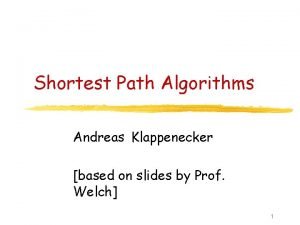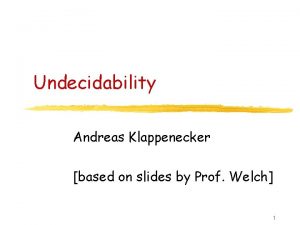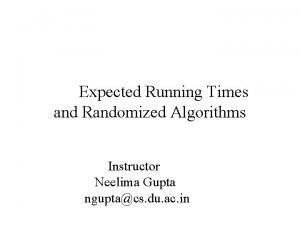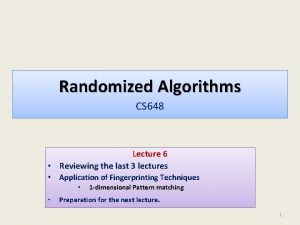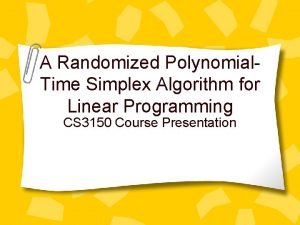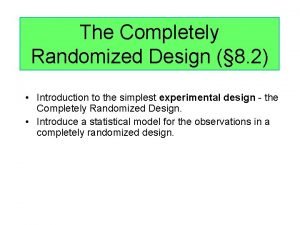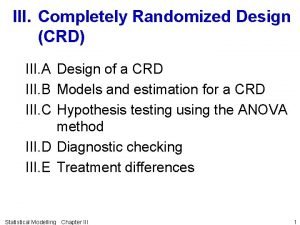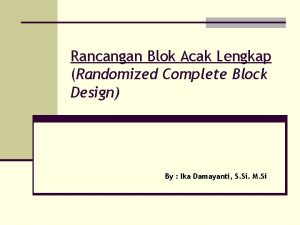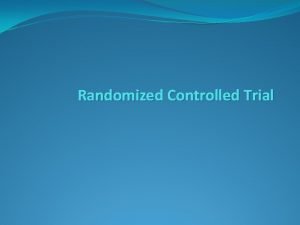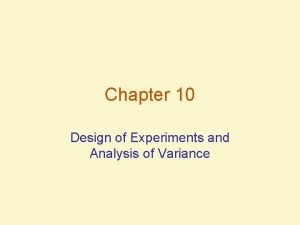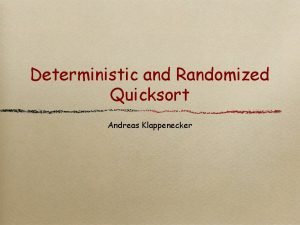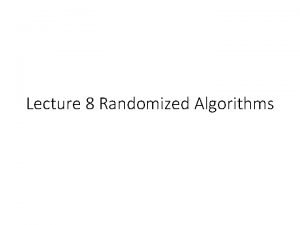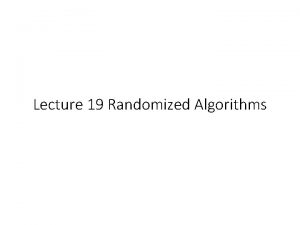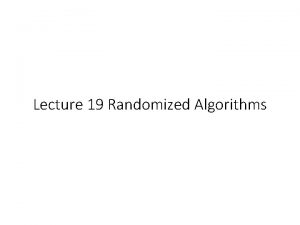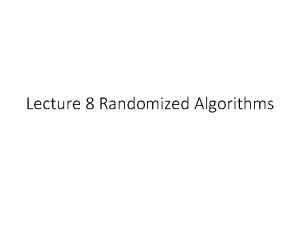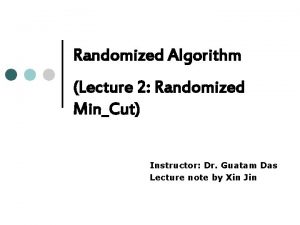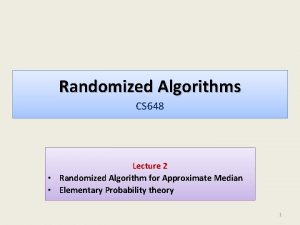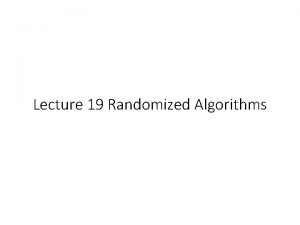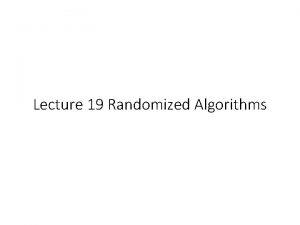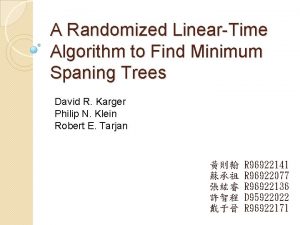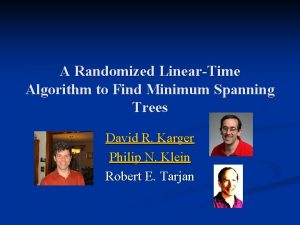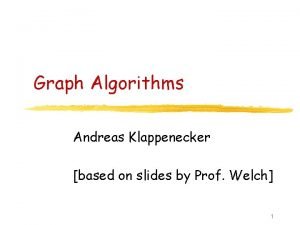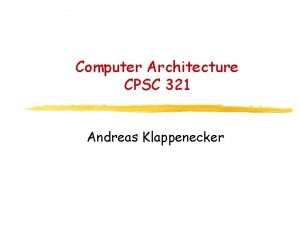A Randomized Algorithm for Minimum Cuts Andreas Klappenecker
















- Slides: 16

A Randomized Algorithm for Minimum Cuts Andreas Klappenecker

Connected Multigraphs

Cut

Size of a Cut The size of a cut is given by the number of edges crossing the cut. Our goal is to determine the minimum size of a cut in a multigraph.

Edge Contraction

Cuts in the Contracted Multigraph

Randomized Algorithm

Basic Idea The algorithm Contract selects uniformly at random one of the remaining edges and contracts this edge until two vertices remain. The cut determined by these two vertices contains precisely the edges that have not been contracted. Counting the number of edges between the two vertices gives an upper bound on the minimum size of a cut.

Two Example Runs Contract {E, F} Contract {D, F} Contract {C, D} Contract {B, D}

Possible Errors The examples show some unsettling property of the algorithm Contract: It does not always return the size of a minimum cut. How likely is it that the algorithm produces a correct result?

Time Complexity

Analysis Let us start with a few simple observations: Let E 1, E 2, . . . , En be events. Then the definition of a conditional probability yields Pr[E 2∩E 1] = Pr[E 2|E 1] Pr[E 1]. Therefore, Pr[E 3∩E 2∩E 1] = Pr[E 3|E 2∩E 1] Pr[E 2∩E 1] = = Pr[E 3|E 2∩E 1] Pr[E 2|E 1] Pr[E 1] More generally, Pr[En∩. . . ∩E 2∩E 1] = Pr[En|En-1∩. . . ∩E 1] Pr[En-1|En-2∩. . . ∩E 1]. . . Pr[E 2|E 1] Pr[E 1]

Prelude Suppose that a multigraph has just one minimum cut C. If any edge crossing this cut C is selected by Contract, then the algorithm will not produce the correct size of the minimum cut. This will be the guiding principle for the analysis. Our analysis is very pessimistic. If the multigraph has more than one minimum cut (which is typically the case), then a minimum cut will be found with greater probability than our analysis will suggest.

Analysis of Contract (1)

Analysis of Contract (2)

Number of Repetitions We have shown that the algorithm will succeed with probability >= 2/n 2. fail with probability <=(1 -2/n 2). Since each run is independent, Pr[fail 1∩. . . ∩ failn] = Pr[fail 1]. . . Pr[failn] Recall from calculus that (1+x/n)n <= exp(x) Repeating the algorithm Contract n 2/2 times, the probability of failure is <= (1 -2/n 2)(n^2/2)<= e-1. Therefore, repeating the algorithm Contract 0. 5 n 2 log n times, give a probability of failure Pr[failure] <= e-log n
 Andreas klappenecker
Andreas klappenecker Andreas klappenecker
Andreas klappenecker Andreas klappenecker
Andreas klappenecker Andreas klappenecker
Andreas klappenecker Expected running time of randomized algorithm
Expected running time of randomized algorithm Randomized algorithm in daa
Randomized algorithm in daa Absolute max vs local max
Absolute max vs local max Randomized polynomial time
Randomized polynomial time Matched pair design
Matched pair design Completely randomized design
Completely randomized design Layout of completely randomized design
Layout of completely randomized design Rcbd meaning in research
Rcbd meaning in research Rcbd design
Rcbd design Advantage of randomized controlled trial
Advantage of randomized controlled trial Randomized design
Randomized design Randomized skip list
Randomized skip list Factorial randomized block design
Factorial randomized block design
